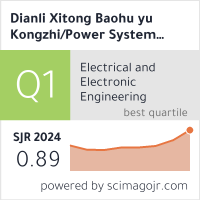DESIGNING AN E-LEARNING CURRICULUM MODEL BASED ON THE COMPONENTS OF ACTIVE CITIZENSHIP EDUCATION IN THE ELEMENTARY SCHOOL
Keywords:
E-learning, Digital Technologies, Active Citizenship Education, Mixed-Methods Research.Abstract
Background and Objectives: With the expansion of digital technologies, e-learning plays an important role in cultivating active citizens. The aim of this research is to design an e-learning curriculum model based on the components of active citizenship education in the elementary school stage. This study was conducted using a mixed-methods approach. Methods: The qualitative section was conducted using grounded theory, interviews with curriculum planning experts, and analysis of documents and reputable scientific sources. The quantitative section involved collecting data from 207 teachers and school principals in Hamadan province, which were analyzed using confirmatory factor analysis and partial least squares structural equation modeling (PLS-SEM). Findings: The qualitative findings identified barriers to designing and implementing the e-learning curriculum at three levels: causal (e.g., weaknesses in e-learning and critical thinking), contextual (e.g., lack of interactive learning environments and access inequality), and intervening (e.g., cultural resistance and teacher skill gaps). “Active citizenship education in e-learning” emerged as the central concept, requiring transformative strategies, teacher empowerment, and purposeful use of digital technologies. The quantitative results confirmed the model’s validity and structure, with significant relationships between constructs and strong predictive power (R²). Conclusion: The overall conclusion indicates that the proposed model, with precise planning, teacher training, and strengthening of infrastructure, can be an effective step toward cultivating active and responsible citizens in the digital society of the elementary education stage.





